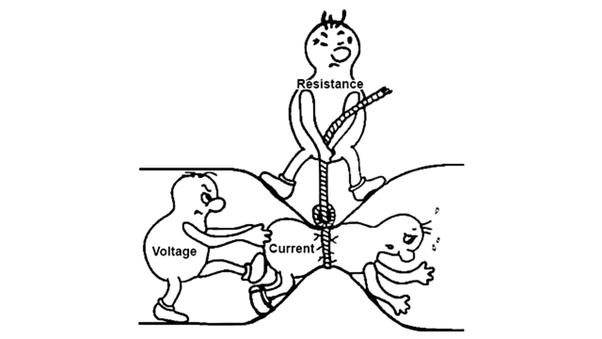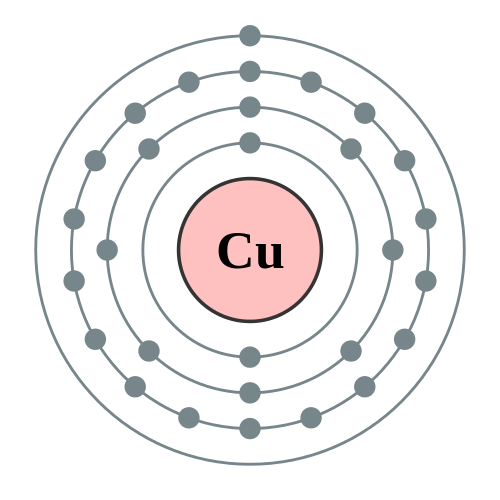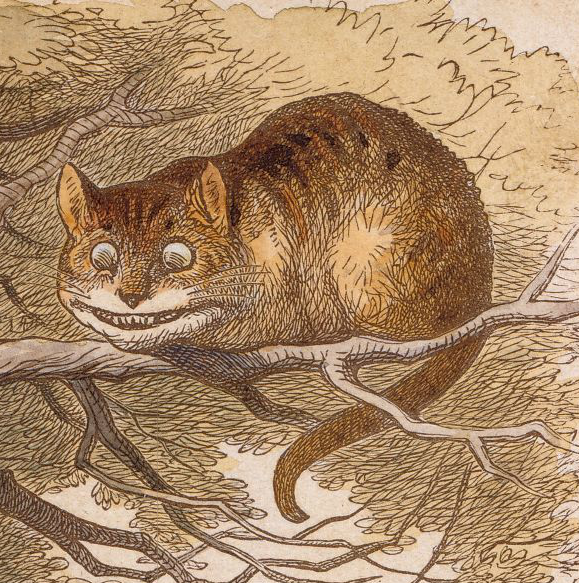Electricity, again
Electric current is the flow of electrons, certain materials make it easier or harder for electrons to move through them. Keep in mind, in order for electrons to want to move, they must have pressure, or potential difference, kind of like a ball has to be on top of a hill in order to roll down, it won't climb the hill on its own. This potential is what we call Voltage, its the pressure of electrons to move. Current measured at a slice of the wire, is how many electrons move through that slice per second, and Resistance is how hard it is for the electrons to move. Imagine the ball rolling down a sandy hill, or same ball, but the hill is smooth glass surface, sand will slow the ball down. In a similar fashion certain materials interact with electrons on their way, which upsets them very much BTW, and when they bump into the material they give it some some of their energy and it heats up. The famous law explaining the relationship between Current Voltage and Resistance is Ohm's law: I = V/R, I is for current, because.. why not, V is for voltage and R is for resistance. So the higher the voltage, the higher the current, but the higher the reistance the lower the current. All materials have some resistance, including copper, thats why wires heat up, and why you need radiators and ventilators in your computer. The resistor elements are made from specific material so that we know exactly how much resistance they have, and we can use them to regulate how much current flows through certain parts of the circuit. In certain conditions there are materials that become superconducting, whith makes it possible for electrons to just move through without interracting with others, and they don't lose energy as heat, but it is really hard for us to maintain the superconducting state. Resistance is measured in ohms, written with the greek letter omega: Ω.


You can think of voltage as the pressure of water, or the force that is pushing the water to go throuh, current as how much water molecules go through a section of the pipe per second, resistance is water filters that slow down the water, and electric charge is the volume of water. Charge is measured in Coulombs (C) , and current colombs per second, measured in Amps (A), 1 Amp is 1 Colomb per second. In the water analogy if Colombs is liters of water, Amps are liters per second.
There are two kinds of current. Direct Current (DC), and Alternating Current (AC). DC is as you imagine just letting the electrons flow, AC is making them go back and forth in certain frequency. The power you get in your house is 220V, 50Hz AC, meaning 50 times a second the electrons change direction, going backward and forward. I am not going to go into deatils why we use one or the other. Almost all electronics use DC, and you use a power adapters convert AC to DC, like your iPhone Charger.
Capacitors capture electric charge, kind of like buckets of water and capacitance is measured in Farads (F). There are infamous examples of people being electrocuted to death because they touched a capacitor on an unplugged device, particularly unplugged microwaves. Some capacitors can hold tremendous amount of charge. The ones we will be working on are tiny, but you should always think twice before working with them, because the amount of charge it holds depends on the voltage it was going through it. You can discharge it with a discharge tool or with a resistor. In our case, we are going to use resistors and capacitors to force the 555 timer to work at specific frequency.
LEDs are Light Emitting Diodes, a diode is an element that allows current to go only in one direction, with all those infinite loops we have, we want to make sure electrons don't go where we dont want them to go. Light Emitting Diodes also produce light.
Lets look at a single copper atom:

When copper atoms bond they form a type of lattice, a face-centered cubic structure.


You see this lonely guy on top, of the copper atom, the kind of lonely electron. when the lattice is formed the atoms can share those electrons freely, and it becomes kind of like a sea of electrons, so it is much easier for them to move around, and that is why copper is a great conductor of electricity.
I = V/R is such a simple law, but each of the symbols has mind bending
complexity and insights into how our universe works. Electromagnetic forces are
the very reason chemistry and complex structures exist. When you trully study
the electromagnetic field you will see that there is true magic in the world,
and I don't mean it in a 'Whoa its so magical, look how beautiful mother nature
is..' kind of way, I mean actual fucking magic!
Remember to bring a gift for the Cheshire Cat before it tunnels.

Well! I've often seen a cat without a grin,' thought Alice 'but a grin without a cat! It's the most curious thing I ever saw in my life!
-- Lewis Carroll, Alice in Wonderland